Mechanical changes every year
Highlighting the engineering progression of the MX-5 Miata
1990
First Model Year
Curb weight: 2200 lb
Engine: 1.6L B6-ZE
HP: 116
Transmission: 5 Speed M526 manual
Optional viscous LSD
14x5.5 Allow wheels
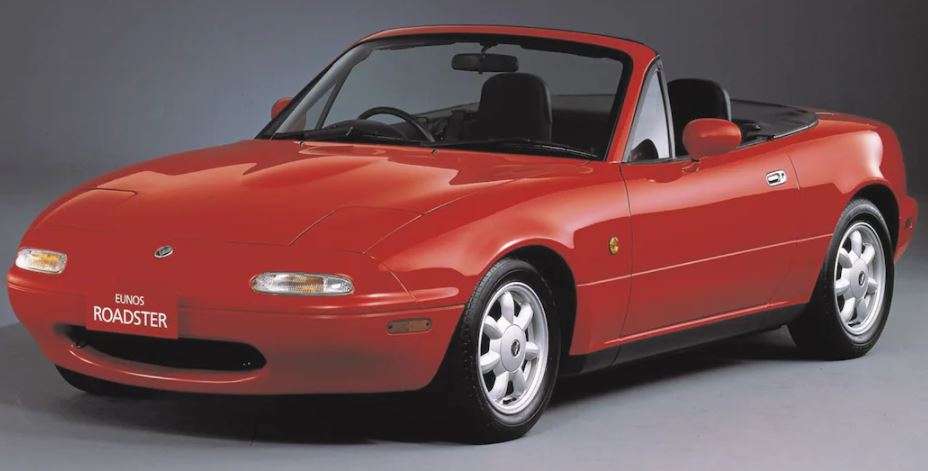
1991
ABS (Automated Braking System) added
Optional 4-speed automatic transmission (Jatco F4A-EL)
1992
Remote Trunk release added
Rear subframe brace added
Rear defroster and headliner added to hardtop
1993
No significant change
1994
Engine changed from 1.6L to 1.8L
- HP increased from 116 to 128
Curb weight increased from 2200 to 2293 lbs
Torsen LSD (known to be much better than the viscous LSD)
Passenger airbag added
Bigger disc brakes
Front subframe brace added
Rear subframe brace changed
Cockpit Brace between seatbelt towers
Flash-to-pass added to headlights
Gas tank increased from 45L to 48L
Wheels widened 0.5 inches and weight lowered 1-2 lbs
differential slightly taller, 4.1 to 4.3:1
Axle design changed (but looks the same as before)
1995
"Dummy" oil gauge introduced. After complaints from owners, Mazda made the oil gauge less accurate so that it did not move while driving.
Axle changed to single piece design (1995 to 2005) but is interchangeable with 1994 design
M Edition features lowest-weight wheels ever, at 9.6 lbs each
1996
OBD-2 added to engine (More accurate and modern diagnostic system still used today, but made car harder to tune)
1997
No changes besides special editions/colors
1998
This model is rare and only exists outside of North America (otherwise made into 1997 or 1999 models)
1999
New body style:
- most mechanical components remained the same
- Weight increased to 2350 lbs
- Pop-up headlights removed due to safety regulations
- Drag coefficient reduced from 0.38 to 0.36
- Larger trunk
- Glass rear window defogger added
- Slightly improved handling and chassis rigidity
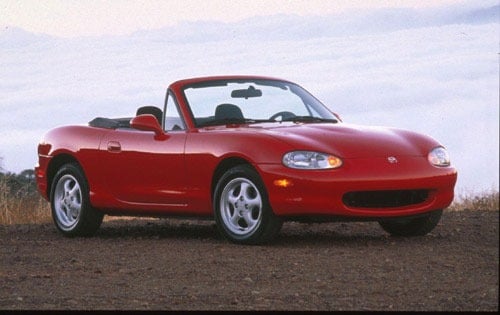
Engine updated to BP-4W:
- HP increase from 131 to 140 (BP-4W engine)
- Compression ratio increased from 9.0:1 to 9.5:1 by doming the pistons
- Stronger Intake cam with a new solid lifter design
- Intake runners in head straightened
- Intake manifold mounted higher
- Variable Intake Control System (VICS) added to engine (better intake swirl at low RPM, better breathing at high RPM)
- New 6 Speed manual available (0.3 second faster 0-60)
Suspension:
Subframes changed slightly
Steering rack changed
Steering assist decreased
Stronger sway bar links
Full list of suspension changes
Improved Torsen LSD option.
Wheels, tires, and brakes upgraded.
2000
No significant change except for optional packages
2001
Facelifted body:
- Body strengthened, gaining 16% in bending rigidity and 22% in torsional rigidity.
- Foglamps made standard
- Headlamps changed
- Rear turn signals changed from amber to clear
- Redesigned center console
- Red instrument panel
- Seats changed, creating the lowest leg room of any generation

Engine changed to BP6D:
- HP increased from 140 to 142 (150 outside North America)
- Variable valve timing (VVT) system added, providing extra torque at low RPM
- Tuning changed to run on 91 octane fuel
2002
No change except for optional packages available.
2003
Torsen LSD switched to Tochigi-Fuji LSD
Larger brakes and 16' alloys now standard
2004
Optional turbocharged Mazdaspeed model (2004-2005)
2005
No change except for optional packages available.
2006
- Largest body size ever made
- Curb weight increased to 2450 lbs
- No parts shared with previous models except differential internals
- Engine mounted 5.3 inches rearward to balance weight and tilted 10 degrees to fit new larger intake manifold
- Battery moved from trunk to engine bay for trunk space
- Stronger, taller body for improved crash ratings
- Standard side air bags added
- Cabin space increased from 46 to 50 cubic feet
- Tilt steering column added
- Convertible double latch switched to single latch
- Paddle shifters added (automatic)
- New weight saving methods:
- Spare tire removed.
- Engine block changed to aluminum.
- Control arms changed to forged aluminum.
- Trunklid changed to aluminum.
- Friction-welded aluminum trunk to steel stud plates
- Lightweight plastic intake manifold and valve cover
- Wheel lug pattern changed to 5 lug to accommodate extra weight
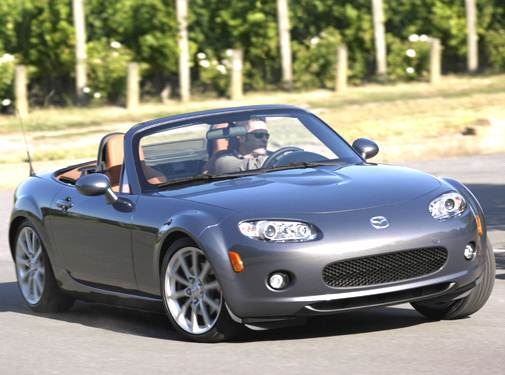
Suspension:
Rear suspension changed from double wishbone to multi-link setup shared with RX-8
New 2.0L MZR-LE-VE engine,
- HP increased to 166 (USA), 158 hp(AUS, EUR)
Note: HP originally listed as 170 but later changed due to measurement regulations
New 1.8L MZR L8-VE (EUR)
- HP decreased to 126
New 6 speed Activematic automatic transmission available
Traction control and stability control added.
2007
Power-retractable hardtop (PRHT) option added (curb weight increased to 2542)
2008
No significant changes
2009
- New happy Mazda look--larger smiley grille, new headlights, foglights, skirts, bumper, tail lights.
- Drag coefficient reduced to 0.34
- Instrument panel redesigned.
- Door pocket protrusion eliminated for extra leg space

Engine overhaul:
- Manual model redline increased by 500 to 7200, fuel cutoff increased to 7500
- HP increased from 166 to 167
- New forged steel crankshaft, forged steel connecting rods with floating wrist pins, revised pistons with stronger wrist pin bosses, stiffer valve springs, and an engine oil cooler.
- Induction Sound Enhancer (ISE) added to manual models.
- New carbon coating on 1st, 2nd, 3rd, and 4th gear synchros and larger diameter synchros on 3rd and 4th gear for better shift feel.
- Traction/Stability control re-tuned to be less intrusive during sporty driving.
Outer ball joints on front suspension repositioned slightly to lower front roll center about an inch.
Damping re-tuned (standard and optional Bilstein) for better handling.
Seat shape changed for better lower-body comfort.
Center console redesigned for better storage.
Padded armrest added behind shifter.
2010
No significant changes
2011
No significant changes
2012
No significant changes
2013
Facelift:
Peak grille happiness (largest opening), revised fog lamp design and new lip spoiler.
Active Bonnet for pedestrian protection
Weight reduction: redesigned front bumper, 17 inch aluminum wheels, internal wiring.
Re-tuned ECU on manual for more linear throttle response.
Brake booster modified for better braking performance.
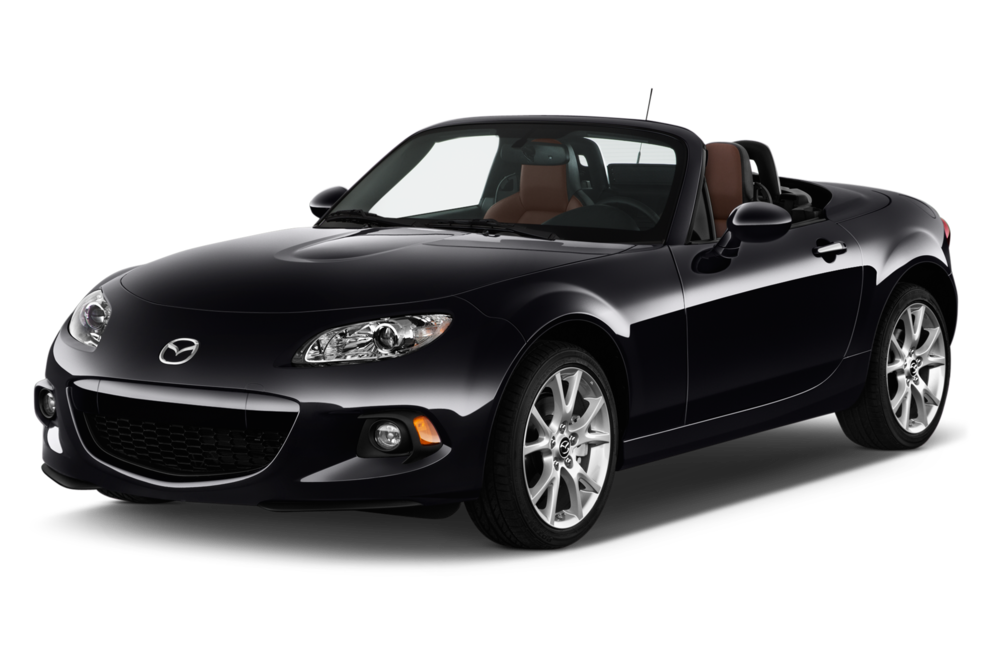
2014
No significant changes
2015
No significant changes
2016
New smaller body style
- Shortest, lightest body style so far (100mm shorter than NC, 50mm shorter than NA). It is also the widest (10mm wider).
Curb weight reduced from 2480 to 2331 lbs (2119 lbs for the 1.5L model)

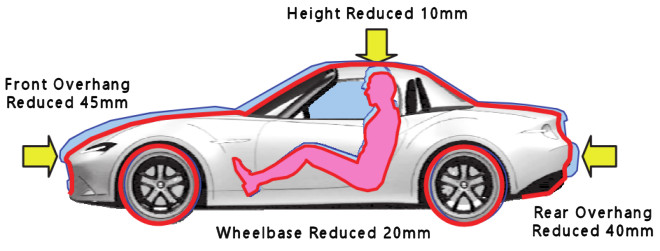
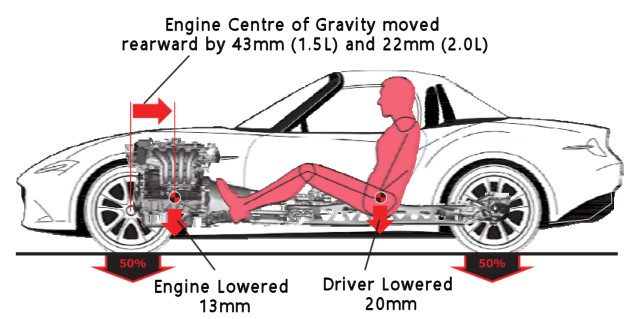
- no parts shared with previous generation
- Faster folding soft top
- Weight reduction methods:
- Hollowed sun visors
- 20% lighter flywheel,
- 15 lbs removed from differential (diff housing shrunk down, switch to aluminum),
- Brakes downsized
- Stronger and lighter steel (High tensile)
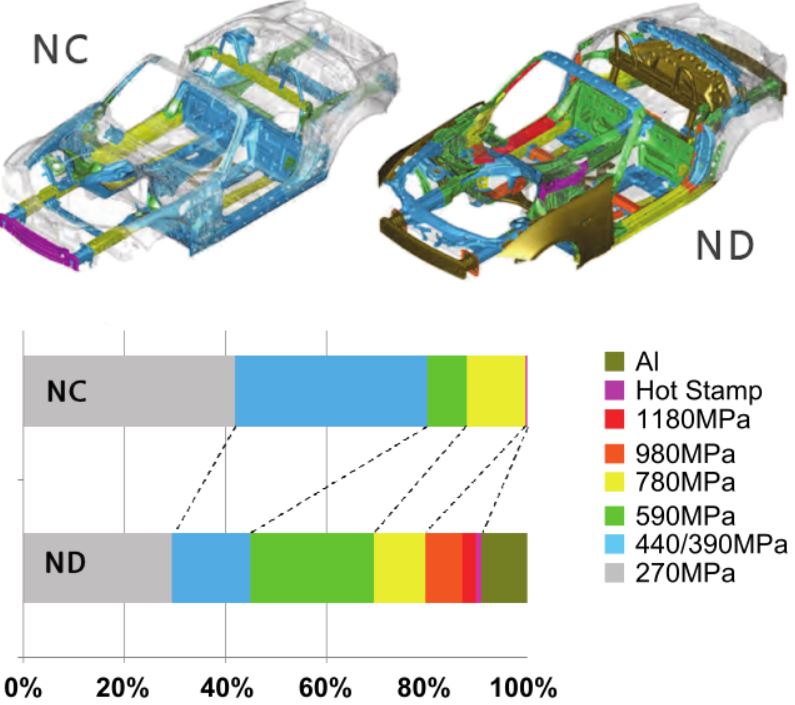
- Aluminum added: Front fenders, Suspension upright, valve cover, diff housing, underbody bracing, anti-roll bar linkages, brake calipers, steering rack housing, steering knuckle, bumper supports, soft top, roll hoops/support structure, crashbar,
Wheels switched back to 4 lug pattern due to decreased weight.
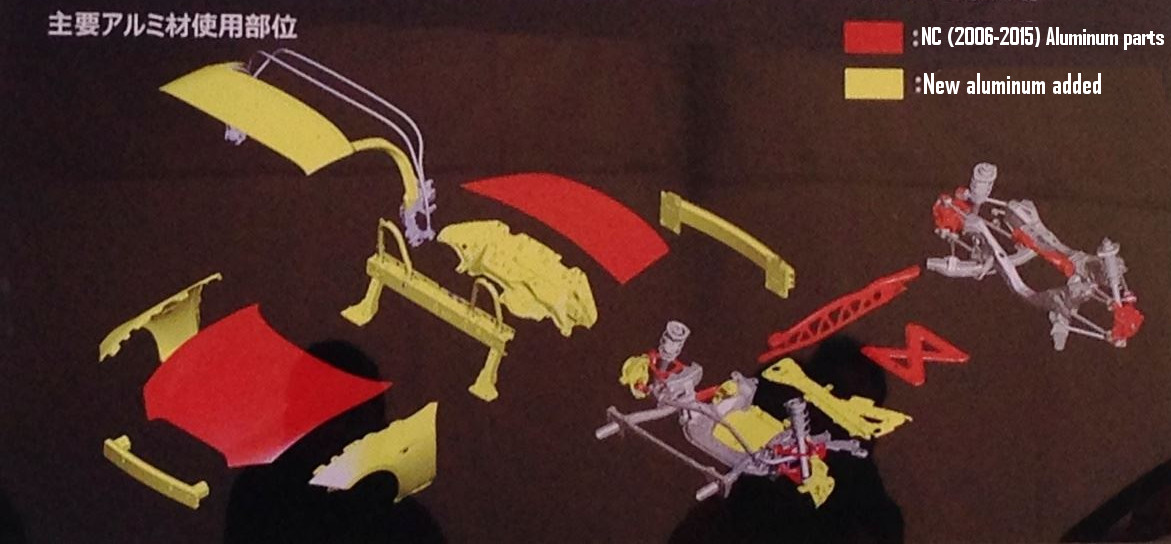
Engine:
- Skyactiv-G 1.5L P5-VPS (EUR) Reduces power to 129 HP
- Skyactiv-G 2.0L PE-VPS (USA) Reduces power to 155 HP
- Engine switched to direct injection for efficiency
- Compression ratio increased to 13.0:1 (14:1 in Japan, Europe) for better efficiency and torque.
- Larger area of horsepower/torque under the curve, making car faster than peak numbers would imply
- 0-60 MPH in 5.9 seconds (0.6 seconds faster than last gen)
Transmission:
- Ribs removed to reduce weight and size (15 lb lighter)
- New casting technology varies thickness of case to handle vibrations.
- New design allowed passengers to sit 15 mm inward for improved crash safety and cabin space.
- 6th gear made into 1:1 gearing for efficiency while cruising (engine connects directly to input shaft so there is no gear friction)
- Early versions of this transmission are infamously problematic. Read more.
Transmission issues
Originally designed for the 1.5L engine, the new 6 speed transmission has serious issues with the 2.0L engine due to the added power and several weak spots in design, especially in the first versions.
V1 Transmission: Original transmission
V2 Transmission: September 5 2016
V3 Transmission: April 3rd 2017
V4 Transmission: November 1st 2017
V5 Transmission June 18 2018

Differential:
- Final drive taller 10% taller (2.86:1) to accommodate 1:1 ratio 6th gear.
- Differential bolt caps moved to outside of diff
- Rear cross-member moved below differential so that structure is straighter and lighter
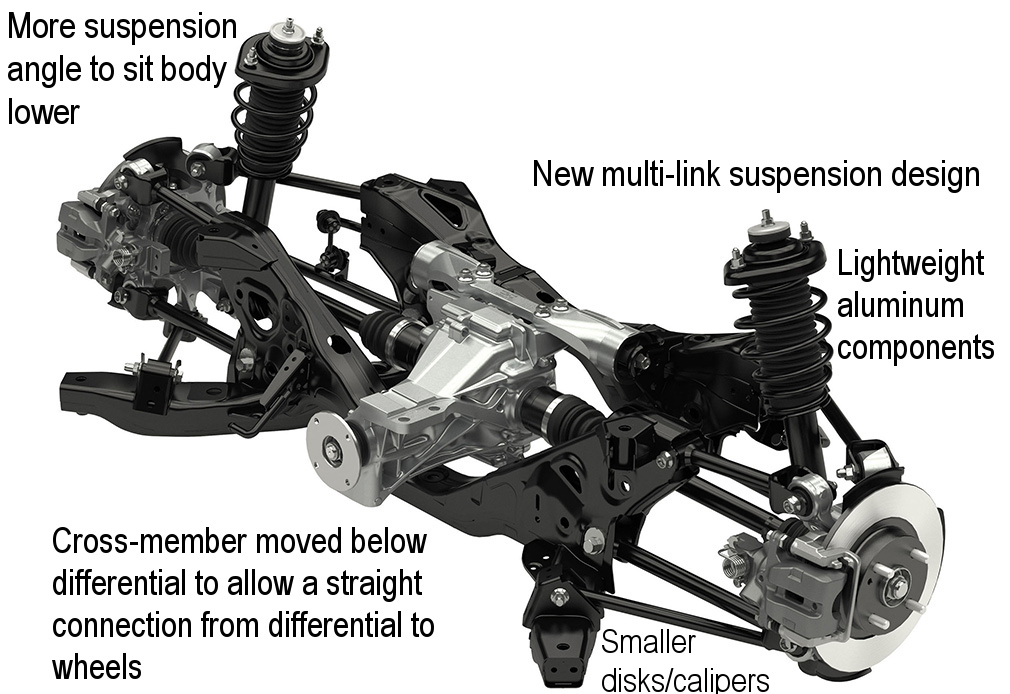
Handling:
- Hydraulic steering converted to electric power steering.
- Assist motor moved to rack instead of column to increase rigidity and steering feel.
- Power assistance kept to minimum and column angle straighter for improved feel.
- Suspension:
- Spring rates lowered to make car more comfortable and prevent flexion due to convertible chassis. It also teaches new drivers to drive smoothly but optional GT (Bilstein) suspension is stiffer and handles slightly better.
- Multi-link suspension maintained in rear but links are in different places, so that it handles differently. As the body rolls, it maintains better camber and pushes force downward to improve grip.
- Suspension top mounts lowered with increased spring angle.
- As car leans in corner, there is a toe-in; adding compliance steer, giving a more controlled feel (no understeer/oversteer). The NC model tended to oversteer, the ND has a more neutral personality.
- Larger wheel bearing for improved steering feel and reliability
2017
2017 (ND1)
Retractable fastback introduced
V2 Transmission introduced with improved reliability
Modified first gear for reliability
Modified second gear
Modified third gear
Modified gear reverse
Modified gear reverse idle
Modified countershaft gear
Note: transmission years may not correlate with model years
2018
Rear suspension and power steering re-tuned for better handling and less cabin noise. Steering feel is heavier and provides more feedback.
V3/V4 transmission with further improved reliability (some question if there are any actual changes or if the suppliers simply changed).
2nd gear and countershaft updated for reliability
2019
Weight increased by 7 lbs
Engine overhaul (the "hot rod" treatment):
Power increased from 155 to 181 HP
Redline increased from 6800 to 7500 RPM
Throttle body size increased (air passage +28%)
Intake, exhaust valves, and port sizes increased (intake port +18%)
Pistons and conrods lightened
Crankshaft stiffened
Fuel injection pressure increased
Transmission:
V5 transmission with further improved reliability
Dual mass flywheel added and new control logic to reduce drive-train oscillation under acceleration, helping to prevent transmission issues.
3rd gear updated for reliability
Telescoping steering wheel added, allowing taller drivers
0-60MPH reduced to 5.7 seconds
Standard rearview camera added due to regulations
Doors open slightly differently.
Cupholders click in slightly differently.
2020
2020 (ND2)
17 inch alloys standard
Leather steering wheel, shift knob, parking brake handle
Apple Carplay/Android auto integration
Blind spot monitoring, rear cross-traffic alert, smart city brake, lane departure warning standard
2021
No changes